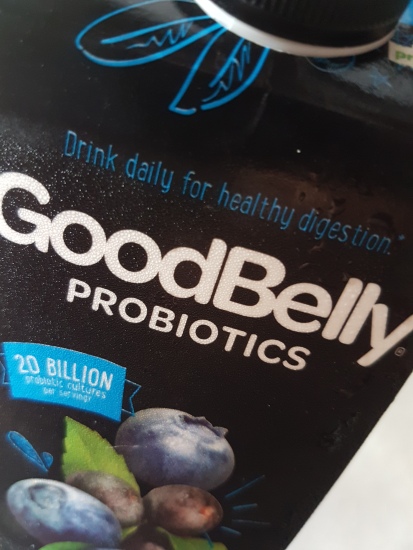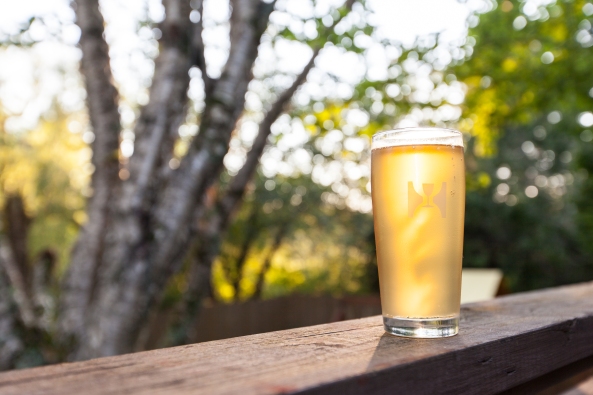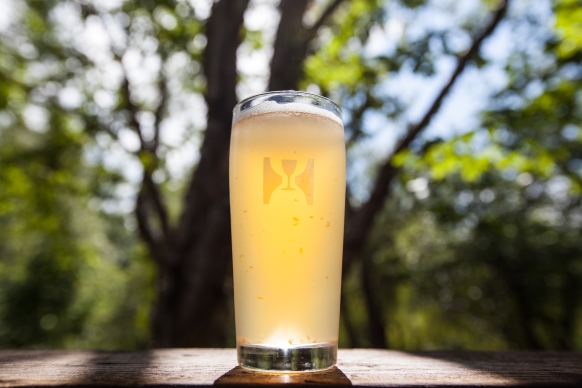Wow, I haven’t posted in a long time. Not that I haven’t been brewing, but I haven’t been brewing anything new or different and therefore worth writing about. I mean, how many times can you post about New England styles without becoming repetitive? But recently I brewed a 10 gallon kettle sour and split the wort into two iterations. I used some new (to me) ingredients and both batches actually turned out well. So this seemed like a good topic to write about again, finally.
I have had some trouble in the past with kettle sours. I’ve had trouble with getting starters from grain to acidify wort to a ph I was happy with. I’ve had trouble with probiotic capsules having a yeast contamination. I’ve also had pure Lacto starters “stall” despite my best efforts. So I decided to do a good deal of reading and research (again) before attempting another kettle sour.
Through my research I came across a Lacto source which I had read about previously but didn’t have access to here in Atlantic Canada. Goodbelly is a probiotic supplement containing Lactobacillus Plantarum. Luckily, I had an upcoming trip to Portland, Maine and decided to attempt to find some while I was there.

While reading Milk the Funk I found that some brewers had good results adding two shots (500ml) of Goodbelly drink directly to 5 gallons of wort. In Portland I managed to get a 1L container so I decided to brew 10 gallons and use the entire container. I would then split the batch into two carboys for two completely different iterations.
The first iteration would be fermented with Brett Classenii. Pineapple puree and toasted coconut would be added to secondary.
The second iteration would be fermented with Brett Amalgamation. Watermelon puree would be added to secondary, when the re-fermentation was complete it would be dry hopped with Huell Melon.
I have tried numerous yeast strains with kettle sours. US05 worked well but had stalled on me one time, despite pitching an active starter. Wyeast 3711 (French Saison) attenuated well, but unless your goal is a tart Saison, that strain has its own character you may not want in your end product. I had been interested in fermenting a kettle sour with Brett strains for a while. I know they are ph resistant and since I was going to add fruit to both versions, I felt they were a perfect choice to help accentuate those additions.
My method for kettle souring has been the same since my very first attempt two years ago. I start by going through the mash process as I would with any beer. I collect my wort and add an acid to drop the wort ph to approximately 4.4 and boil for 15 minutes to ensure I have a “clean” slate to work with. I then chill to the appropriate temperature (90F in this case for L.Plantarum) and pitch my culture. I cover the top of the kettle with sanitized plastic wrap and put the lid on. I start taking ph and gravity reading at 24 hours and then about every 12 hours after that until I reach my desired ph (~3.3). I the bring the acidified wort up to a boil for 15 minutes, add hops, chill to 62F and pitch my yeast, in this case Brett.
I have read that if you are using Goodbelly for a quick sour that you should use the mango flavour as it is the least impactful on flavour to the resultant beer. I could only find blueberry acai and I must admit that when I took a ph reading I could detect a berry character from the wort. Thankfully, through the boil and fermentation that character was completely lost.
Kettle sours have been the most fickle for me to brew. I’ve had numerous issues throughout all the attempts I’ve made over the last two years. But this time everything went according to plan. The 10 gallons was soured to a ph of 3.28 within 68 hours. The split batches both fermented and attenuated well, each finishing at 1.005. I am happy with both iterations but they do both suffer from being a little too mild in flavor with respect to the fruit additions I made.
I would highly recommend using Brett to ferment kettle sours, both varieties fermented quickly and attenuated really well despite the low ph. Both versions actually tasted really good prior to adding secondary ingredients. The Brett C versions had a nice citrus character to it. The Amalgamation version was even better with a tropical profile, I actually debated leaving that version plain as it tasted quite nice on its own. In the end I decided to go ahead as planned, after all if you have a good base, adding quality ingredients should only enhance the end product.
If you’re interested in Goodbelly as a Lacto source I highly recommend it! This was as simple as a kettle sour can be. No starter ahead of time, relatively fast souring with a clean profile. I’ll be using this as a source again, if I can get my hands on it.
I tried making my own fruit purees for the first time for these beer. I really liked how it incorporated into the beer much better compared to adding whole fruit. I simply sanitized a large blender, added the fruit and blended until it reached a smooth and even consistency.
Recipe Targets: 10 Gallons, OG 1.039, FG 1.005, IBU 4.4, ABV 4.7%, SRM 3.1
Grain:
4.50kg Pilsner 66.6%
1.75kg Maris Otter 25.9%
0.51kg Malted Wheat 7.5%
Hops:
7g Waimea (17.5%) – Boil 15 mins
Yeast & Extras:
1L Goodbelly (Lacto Plantarum)
Version 1: – Fermented with Brett Claussenii, Toasted coconut (260g) and pineapple puree (750ml) added to secondary for two weeks.
Version 2: – Fermented with Brett Amalgamation, Watermelon puree (3L) added to secondary for two weeks, dry hopped with Huell Melon (112g) for 4 days.
Version 1:

Appearance: Pours with a thin ring of white head that fades completely within seconds. Pale straw in color.
Aroma: Very mild Brett funk followed by slight pineapple.
Flavour: Light lactic sourness followed by slight pineapple and mild coconut. Possibly some slight over ripe fruit from the Brett as well.
Mouthfeel: Light-moderate mouth feel with medium carbonation.
Overall: I’ve listened to many episodes of the Sour Hour and the point I keep hearing Jay Goodwin talking about is creating a balanced sour beer with nuanced aromas and flavors. That’s what I was attempting to accomplish with this iteration. However I think this could use more pineapple to help round everything out. I would like it to be more sour as well. I felt a ph of 3.28 would be plenty sour, but this beer could also stand to have more acidity. Perhaps my ph meter is simply unreliable despite being calibrated prior to each use. This beer also suffers from poor head retention, which is not that uncommon in sour beer but something to try to correct by dropping the ph further prior to pitching Lacto next time. Otherwise, this is enjoyable and the process went smoother than any other kettle sour I’ve brewed.
Version 2:

Appearance: Pour with a frothy white head (1/2″) that fades to a thin ring that persists. Pale straw in color.
Aroma: Minimal watermelon followed by light grain. No hop aroma whatsoever.
Flavor: Mild/moderate watermelon followed by a light supportive malt backbone. Finishes clean.
Mouthfeel: Light lactic acidity. Light/medium body, moderate carbonation.
Overall: This could use more watermelon despite the 3L of puree added. I would like more acidity, it is lightly sour considering the 3.28 ph. There is no hint of the dry hop addition whatsoever. I’m not experienced with Huell Melon, this was my first time using the variety. However, I would have expected there to be some contribution for 4oz in a 5 gallon batch. I’m always surprised how difficult it is to get dry hop character in a sour. Otherwise this is very enjoyable, I like the watermelon flavor despite it lacking slightly compared to what I was going for. I would certainly attempt this iteration again.

I’ve used both Safale K-97 and Imperial Citrus (aka Sacch Trois) yeasts with grest success in kettle sours. My favorite is the Citrus Yeast strain especially in a Gose. Definitely recommend either of those; I had similar letdowns with Safale US-05 and low pH wort. Cheers!
LikeLike
How long did you ferment the Brett strains for in primary?
LikeLike
It only needed about two weeks with the Brett strains I used.
LikeLike